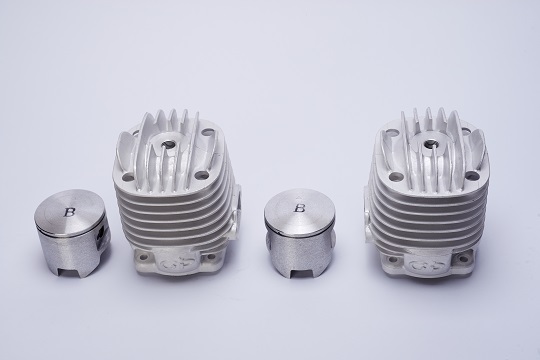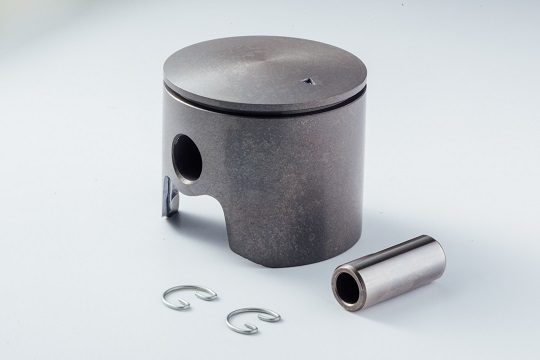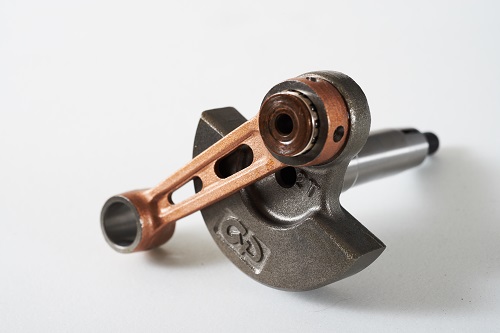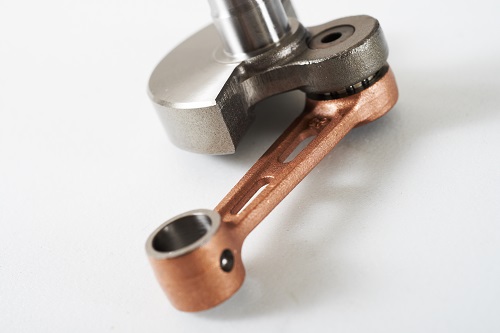Gravity Die Casting for Cylinder, Piston


Casting methods differ from each other because of their distinct characteristics. GP respectively chooses the ideal casting process for each component. In the case of cylinders and pistons, the key elements of power and life, they are produced through Gravity Die Casting, also known as permanent mold.
Gravity die casting is a casting process where molten metal is poured into the mold, using no force other than gravity to control the filling of the liquid metal. Undercuts and cavities can be incorporated into the component form with the use of sand cores. This process also offers better mechanical properties, exceptional tolerances, and smoother surface finish.
Gravity die casting is applied to cylinders and pistons for various reasons. Its high accuracy contributes to the identical positioning of intake and exhaust, which gives a stable performance and decreased defect rate. Lower levels of trapped gas within the mold leads to high integrity casts with good surfaces finish. Pouring the metal through this process also prevents the possibility of the metal folding over itself when it’s introduced to a mold too quickly.
- Thinner walls can be cast.
- Reverse draft internal pockets and forms can be cast in using preformed sand core inserts.
- Steel pins and insets can be cast into the part.
Investigating the process further, the gravity die casting process involves four steps:
- The die is heated and then sprayed with a refractory coating, and closed. The coating both helps control the temperature of the die during manufacture and it also assists in the removal of the casting.
- Molten metal is then manually poured into the die and allowed to solidify.
- The die is then opened and the cast parts either removed by hand or in some cases ejector pins are used on the mechanized machines.
- Finally, the scrap, which includes the gate, runners, sprues, and flash, is removed from the casting. The castings are then processed to remove sharp edges and excess material, then blast cleaned prior to dispatch to the customer.
Dynamic Balancing and Forging for Crankshaft


Two techniques GP applies to produce crankshafts are the dynamic balancing and forging. The former method is to ensure the crankshaft is balanced when rotating. The latter is to make the shaft even stronger.
Dynamic balancing is an approach of adding or taking away weights from parts in motion to redress the imbalance caused by fast rotating. When a dynamic unbalanced crankshaft spins quickly in an engine, the mass of the component will generate a force that is not in alignment with the center of the rotation. The consequent huge vibration in an engine will greatly reduce the life of machines and affect performance. Every GP crankshaft and connecting rod are precisely balanced to avoid such vibration and give stabilities.
Forging is a manufacturing process involving the shaping of metal using localized compressive forces. The blows are delivered with a hammer or a die. As crankshaft is working under heavy load and continuous bending and torsion movement, forged crankshaft offers high rigidity, metal strength, and resistance fatigue.
Nodular Cast Iron Piston
Together with the piston, a piston ring experiences a heavy load of work as well as friction. To ensure combustion chamber stays entirely sealed for high compression and thus power output, Ductile Cast Ring is adopted, for it can resist a high level of bending, friction, and avoid breaking.
The iron’s nodular shaped grains of the microstructure are key to its remarkable resistance to breaking apart. Their functions are to build up the material’s strength to bend without breaking. Nodular iron cast piston rings are roughly twice as strong as grey iron piston rings.
Nodular iron cast rings are also best suited for high-performance engines. During 3D flight, the engine will go through sharp movements such as whirling and rocketing upwards. This material can withstand aerobatics of rapid change in direction, high RPMs, and high stress.
